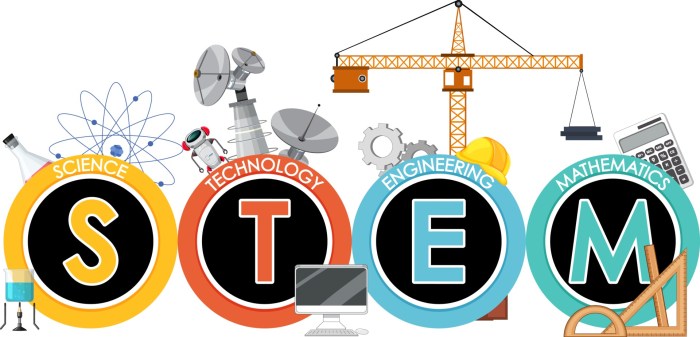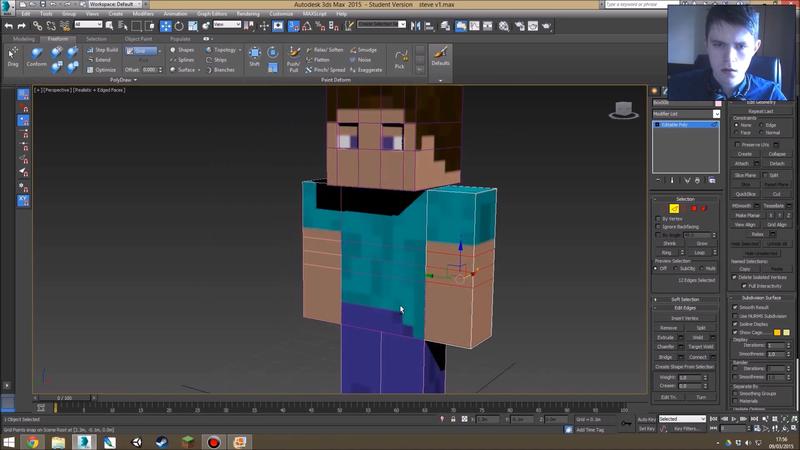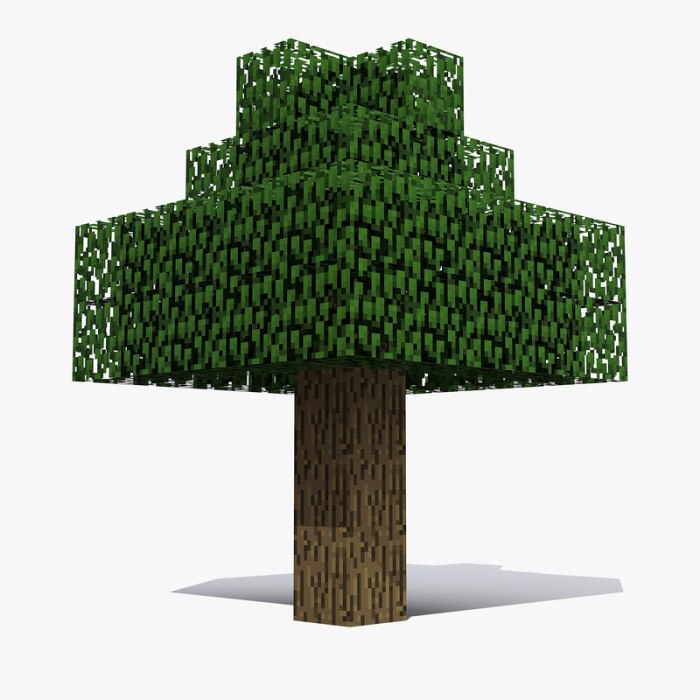Teaching STEM with 3D Minecraft: Creative Lesson Plans is more than just a catchy title; it’s a blueprint for revolutionizing how we engage young minds in the exciting world of science, technology, engineering, and mathematics. The interactive nature of Minecraft, coupled with its 3D capabilities, offers a unique platform for making STEM learning not just accessible but downright fun.
Imagine a classroom where students aren’t just passively absorbing information, but actively building bridges, designing circuits, and exploring the intricacies of ecosystems – all within the immersive world of Minecraft. This isn’t just a game; it’s a catalyst for critical thinking, problem-solving, and collaboration, empowering students to become creators and innovators.
Introduction

In today’s rapidly evolving world, STEM (Science, Technology, Engineering, and Mathematics) education is more crucial than ever. STEM skills are in high demand across various industries, and equipping students with these skills is essential for their future success. However, traditional STEM teaching methods can often feel dry and abstract, leading to disengagement among students.
This is where Minecraft comes in.Minecraft’s interactive nature and open-ended gameplay provide a unique opportunity to engage students in STEM learning. By building, exploring, and experimenting within the Minecraft world, students can develop critical thinking, problem-solving, and creativity skills, all while learning important STEM concepts.
Advantages of Using 3D Minecraft in Teaching STEM, Teaching STEM with 3D Minecraft: Creative Lesson Plans
Minecraft’s 3D environment allows students to visualize and interact with STEM concepts in a way that is simply not possible in traditional classrooms. For example, students can build complex structures in Minecraft, learning about geometry, physics, and engineering principles in the process.
Teaching STEM with 3D Minecraft opens up a world of possibilities for engaging young minds. From building intricate structures to designing complex mechanisms, the game provides a hands-on platform for learning. But first, you’ll need to get your hands on the game itself! If you’re looking for the mobile version, check out How to Download 3D Minecraft for Pocket Edition (PE) for a step-by-step guide.
Once you’re equipped, the possibilities for creative STEM lessons are endless!
They can also experiment with different materials and design solutions to real-world problems, developing their problem-solving skills and understanding of scientific principles.
- Engaging and Immersive Learning Experience:Minecraft’s open-ended gameplay and immersive 3D environment can captivate students’ attention and make learning more enjoyable. Students are more likely to be motivated to learn when they are actively engaged in the process, and Minecraft provides a platform for this active learning.
- Hands-On Learning and Experimentation:Minecraft allows students to experiment with different concepts and see the results of their actions in real-time. This hands-on approach to learning is crucial for developing a deeper understanding of STEM concepts and fostering critical thinking skills.
- Development of Problem-Solving and Critical Thinking Skills:Minecraft challenges students to solve problems, design solutions, and think creatively. This process helps them develop critical thinking skills, which are essential for success in STEM fields and in life.
- Collaboration and Teamwork:Minecraft can be played in multiplayer mode, allowing students to collaborate on projects and learn from each other. This fosters teamwork and communication skills, which are highly valued in the workplace.
Minecraft as a STEM Learning Platform

Minecraft’s popularity extends beyond its engaging gameplay, offering a unique platform for teaching STEM concepts. Its immersive world and creative freedom provide an ideal environment for fostering problem-solving, critical thinking, and collaboration skills.
Minecraft’s Role in STEM Education
Minecraft’s ability to integrate STEM learning into its gameplay stems from its open-ended nature and diverse possibilities. Students can explore and experiment with various concepts, applying theoretical knowledge to practical scenarios.
Benefits of Using Minecraft for STEM Learning
- Problem-Solving and Critical Thinking:Minecraft challenges players to solve problems creatively, analyze situations, and devise strategies to overcome obstacles. For example, students might need to design a bridge that can withstand certain weight or build a water-powered system to generate energy. These challenges encourage critical thinking and problem-solving skills, essential for STEM fields.
- Creativity and Innovation:The game’s sandbox environment allows students to experiment and build anything they imagine. This fosters creativity and encourages students to think outside the box, leading to innovative solutions and new ideas. Students can design their own structures, machines, and even entire worlds, fostering a sense of ownership and accomplishment.
- Collaboration and Teamwork:Minecraft’s multiplayer mode promotes collaboration and teamwork, allowing students to work together to achieve common goals. This collaborative environment encourages communication, negotiation, and shared decision-making, skills crucial for successful STEM careers.
Examples of Minecraft’s Application in STEM Subjects
- Physics:Minecraft allows students to explore concepts like gravity, motion, and energy. For instance, they can build roller coasters and experiment with different track designs to understand the relationship between speed, friction, and gravity. Students can also design and build simple machines, such as levers and pulleys, to understand their mechanical advantage.
- Chemistry:Minecraft’s crafting system can be used to teach chemical reactions and the properties of different materials. Students can experiment with different ingredients to create new items, learning about the chemical changes involved in the process. This can be further enhanced by using mods that add elements from the periodic table, allowing students to explore the properties of various atoms and molecules.
- Biology:Minecraft can be used to simulate biological systems and explore concepts like ecosystems and food chains. Students can create virtual ecosystems with different plants and animals, observing how they interact and adapt to their environment. This can also be used to teach about genetic mutations and the evolution of species.
- Engineering:Minecraft’s building mechanics provide a hands-on platform for learning engineering principles. Students can design and build structures, machines, and vehicles, applying concepts like load-bearing, stability, and efficiency. They can experiment with different materials and designs to optimize their creations, understanding the trade-offs between functionality, aesthetics, and cost.
Minecraft’s Open-Ended Nature and Differentiated Learning
Minecraft’s open-ended nature caters to various learning styles, allowing students to engage with the content in ways that best suit their individual needs.
Differentiated Learning in Minecraft
- Visual Learners:Minecraft’s visual environment allows visual learners to engage with the content through exploration and observation. They can learn by building, experimenting, and observing the results of their actions.
- Kinesthetic Learners:Minecraft’s hands-on nature allows kinesthetic learners to engage with the content through physical activity. They can learn by building, manipulating objects, and interacting with the environment.
- Auditory Learners:Minecraft can be used to create interactive lessons that incorporate audio elements. Students can listen to lectures, participate in discussions, and even create their own sound effects for their projects.
- Read/Write Learners:Minecraft can be used to create interactive lessons that incorporate text-based activities. Students can read instructions, write reports, and even create their own stories within the game.
Creating Engaging Minecraft Lesson Plans
Minecraft, with its open-ended nature and creative possibilities, is an ideal platform for engaging students in STEM learning. It provides a fun and immersive environment where students can explore, experiment, and apply their knowledge in practical ways.
Designing Minecraft Lesson Plans
Designing Minecraft lesson plans involves a structured approach that ensures the lesson aligns with educational objectives and provides a meaningful learning experience. Here’s a step-by-step guide for creating a Minecraft lesson plan:
1. Define Learning Objectives
Clearly define the specific STEM concept or skill you want students to learn through the Minecraft activity. For example, a lesson plan focused on structural integrity could have the following objectives:* Students will be able to define structural integrity.
- Students will be able to identify the key components of a stable structure.
- Students will be able to apply their understanding of structural integrity to design and build a bridge in Minecraft.
2. Choose a Minecraft Activity
Select a Minecraft activity that aligns with the learning objectives and engages students.For example, to teach structural integrity, you could have students:* Build a bridge across a ravine.
- Construct a tower that can withstand earthquakes.
- Design a house that can withstand strong winds.
3. Gather Materials
Ensure you have all the necessary materials, including:* Minecraft game access (either through individual accounts or a classroom license).
- A projector or screen for demonstrating the activity.
- A whiteboard or chart paper for brainstorming and recording observations.
- Worksheet or assessment tools for evaluating student understanding.
4. Develop Procedures
Create a detailed set of procedures for the lesson, including:* Introduction:Briefly introduce the STEM concept and its relevance to the real world.
Minecraft Activity
Provide clear instructions for the Minecraft activity, including the specific challenge, resources available, and any time constraints.
Exploration and Experimentation
Encourage students to explore different approaches, experiment with materials, and troubleshoot problems.
Discussion and Reflection
Facilitate a discussion where students share their experiences, observations, and insights gained from the Minecraft activity.
5. Assess Student Learning
Design assessments to evaluate student understanding of the STEM concept. This could include:* Observation:Observe students as they participate in the Minecraft activity and note their problem-solving strategies, creativity, and collaboration.
Written Assessment
Ask students to answer questions about the STEM concept or describe their design choices and reasoning.
Presentation
Have students present their Minecraft creations and explain their design choices and the principles of structural integrity they applied.
Integrating Minecraft Activities into Existing STEM Curricula
Minecraft activities can be seamlessly integrated into existing STEM curricula, enhancing learning and providing a fun and engaging context for applying concepts. Here are some strategies for integrating Minecraft activities:
1. Use Minecraft as a Reinforcement Tool
After teaching a STEM concept in a traditional classroom setting, use Minecraft to provide students with hands-on experience applying their knowledge.For example, after teaching about the properties of different materials, have students build structures in Minecraft using those materials to see how they behave in different situations.
2. Use Minecraft for Project-Based Learning
Design Minecraft projects that allow students to explore a specific STEM topic in depth.For example, a project could involve designing and building a sustainable city in Minecraft, incorporating concepts like renewable energy, waste management, and transportation systems.
3. Use Minecraft for STEM Challenges
Create Minecraft challenges that require students to apply their STEM knowledge to solve problems.For example, a challenge could involve designing and building a machine that can harvest resources efficiently or constructing a bridge that can withstand a specific weight.
Assessment and Evaluation
Assessing student learning in a Minecraft-based STEM environment requires creative approaches that go beyond traditional pen-and-paper tests. The dynamic and engaging nature of Minecraft provides opportunities for evaluating a wide range of skills and knowledge.
Methods for Assessing Student Learning
Evaluating student learning in a Minecraft-based STEM environment can be done through a variety of methods, each offering unique insights into students’ understanding and application of STEM concepts.
- Project-Based Assessment: Minecraft’s open-ended nature allows students to demonstrate their understanding through the creation of projects. These projects can range from building complex structures to designing and implementing functional machines, showcasing their problem-solving, design thinking, and technical skills.
- In-Game Observations: Teachers can observe students as they work in Minecraft, noting their problem-solving strategies, teamwork, and application of STEM concepts in real-time. This method provides valuable insights into students’ thinking processes and their ability to transfer knowledge to a hands-on environment.
- Digital Artifacts: Students can create digital artifacts like screenshots, videos, or even world downloads to document their work. These artifacts provide evidence of their progress, challenges they faced, and solutions they implemented, allowing teachers to assess their understanding and problem-solving skills.
- Written Reports and Presentations: Students can create written reports or presentations to explain their Minecraft projects, outlining the scientific principles, engineering concepts, or mathematical calculations they applied. This method encourages critical thinking and communication skills.
- Peer Review: Encouraging students to review each other’s work fosters collaboration and provides valuable feedback. Students can learn from each other’s approaches and gain a deeper understanding of the concepts.
Rubrics and Assessment Tools
Rubrics are valuable tools for providing clear expectations and consistent evaluation of student work.
- Project-Based Rubrics: Rubrics can be developed for specific Minecraft projects, evaluating criteria like creativity, technical accuracy, problem-solving, teamwork, and communication skills. For example, a rubric for a bridge-building project might assess the structural integrity, aesthetic appeal, and efficiency of the bridge.
- In-Game Observation Checklists: Checklists can be used to track specific behaviors or skills observed during in-game activities. For instance, a checklist might include items like “demonstrates understanding of basic coding concepts,” “collaborates effectively with teammates,” or “uses appropriate building materials.”
- Digital Artifact Analysis: Teachers can use rubrics or checklists to evaluate digital artifacts like screenshots, videos, or world downloads. These rubrics might focus on criteria like the complexity of the project, the accuracy of the scientific or engineering principles applied, or the clarity of the presentation.
- Written Report and Presentation Rubrics: Rubrics can be used to assess the clarity, accuracy, and depth of written reports or presentations. Criteria might include the use of scientific language, the accuracy of the information presented, and the effectiveness of the presentation.
Incorporating Student Feedback and Reflections
Student feedback and reflections are essential components of the evaluation process. They provide valuable insights into students’ learning experiences and help teachers refine their teaching practices.
- Self-Assessment: Encourage students to reflect on their learning by asking them to assess their own progress and identify areas where they need further support.
- Peer Feedback: Facilitate peer feedback sessions where students can share their thoughts and provide constructive criticism on each other’s work.
- Teacher Feedback: Provide clear and specific feedback on student work, highlighting strengths and areas for improvement.
- Journaling: Encourage students to keep journals where they can document their learning experiences, challenges, and insights.
Resources and Tools: Teaching STEM With 3D Minecraft: Creative Lesson Plans
Having access to the right resources and tools can significantly enhance your Minecraft STEM teaching journey. From curated lesson plans to interactive platforms, a wealth of support is available to help you integrate Minecraft effectively into your curriculum.
Minecraft Education Edition
Minecraft Education Edition is a specially designed version of Minecraft tailored for educational purposes. It offers a suite of features that make it ideal for STEM learning, including:
- Classroom Mode:This feature allows teachers to control the game environment, manage student accounts, and monitor progress.
- Code Builder:This feature provides a visual coding environment that enables students to program Minecraft using blocks. This is an excellent tool for teaching computer science concepts.
- Curriculum Content:Minecraft Education Edition offers a library of pre-built worlds and lesson plans designed to teach various STEM subjects, including math, science, and engineering.
Minecraft STEM Resources
Several online resources provide valuable support and inspiration for educators using Minecraft for STEM activities. These resources offer lesson plans, tutorials, and communities where educators can connect and share ideas.
- Minecraft: Education Edition website:The official website for Minecraft Education Edition provides a wealth of information, including lesson plans, tutorials, and support materials.
- Teachers Pay Teachers:This platform offers a vast collection of Minecraft STEM lesson plans and activities created by educators.
- Minecraft Education Community:This online community allows educators to connect with other Minecraft users, share ideas, and collaborate on projects.
- Minecraft Education Blog:This blog features articles and resources related to using Minecraft for STEM education.
Minecraft Mods and Plugins
Minecraft mods and plugins can significantly enhance STEM learning experiences by adding new features and functionalities to the game. These modifications can introduce new challenges, expand learning opportunities, and make Minecraft even more engaging for students.
- ComputerCraft:This mod introduces a programmable computer that students can use to build complex machines and automate tasks. This is a great way to teach computer programming and logic.
- BuildCraft:This mod adds advanced building tools and machines, allowing students to create complex structures and mechanisms. It can be used to teach engineering principles and problem-solving.
- MalisisCore:This mod provides a framework for creating custom mods and plugins, allowing educators to tailor Minecraft to their specific needs and learning objectives.
Conclusion

The use of Minecraft in STEM education offers a unique and engaging approach to learning. By leveraging the game’s immersive environment, creative tools, and open-ended gameplay, educators can foster critical thinking, problem-solving, and collaboration skills among students.
The Benefits of Using Minecraft for STEM Education
Minecraft provides a platform for students to explore STEM concepts in a hands-on, interactive way.
- Engaging and Motivating:Minecraft’s immersive gameplay and creative possibilities can motivate students who may not be traditionally engaged in STEM subjects.
- Hands-on Learning:Students can build, experiment, and test their ideas in a virtual environment, promoting active learning and a deeper understanding of STEM concepts.
- Collaboration and Communication:Minecraft facilitates teamwork and communication as students work together to solve problems and build projects.
- Problem-Solving and Critical Thinking:The game challenges students to think critically, solve problems, and apply their knowledge in real-world scenarios.
- Computational Thinking:Minecraft encourages students to develop computational thinking skills, such as planning, debugging, and coding.
The Importance of Ongoing Innovation and Exploration
The use of Minecraft in STEM education is constantly evolving. As new features and tools are introduced, educators can explore innovative ways to integrate Minecraft into their lessons.
- Experiment with New Features:Stay updated on the latest Minecraft updates and explore how new features can be used to enhance STEM learning.
- Collaborate with Other Educators:Share ideas and best practices with other educators who are using Minecraft in their classrooms.
- Develop Custom Mods and Plugins:Create custom mods and plugins that can tailor Minecraft to specific STEM learning objectives.
Wrap-Up
By harnessing the power of Minecraft, we can unlock a new era of STEM education, one where learning is driven by curiosity, exploration, and a desire to build, create, and solve real-world problems. The possibilities are endless, and the future of STEM education is looking more engaging than ever before.